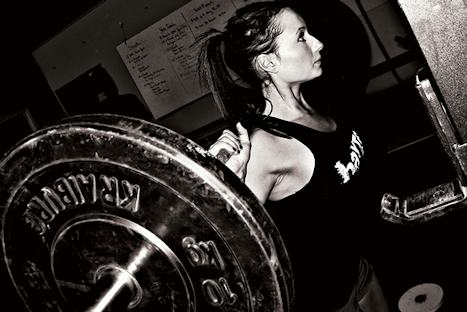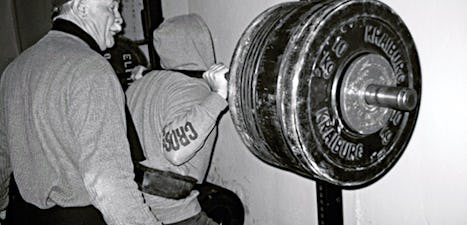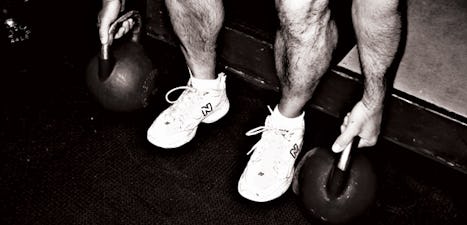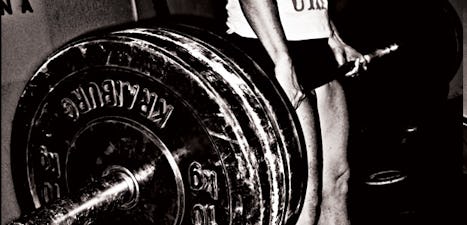 Finding the strongest version of you is not extremely complicated, but the psychological and physical challenges are daunting. It requires consistent focus, intensity, and great determination. Remember that being strong is a lifelong process and it does not boil down to one session, one week, or even one month of training. Use these 5 rules of strength to get on the right track to real strength.
Finding the strongest version of you is not extremely complicated, but the psychological and physical challenges are daunting. It requires consistent focus, intensity, and great determination. Remember that being strong is a lifelong process and it does not boil down to one session, one week, or even one month of training. Use these 5 rules of strength to get on the right track to real strength.
I’ve had the great fortune of training under one of the USA’s great weightlifting coaches in Steve Gough, who coached his son, Tom, to the ‘96 Olympics. In case you don’t know much about weightlifting, Tom snatched 167.5kg, and clean and jerked 210kg as a 91kg weightlifter – both are American Records in that class. It goes without saying that Steve comes highly regarded in the strength world. Most of what I know about getting strong comes from this grizzly old ex-marine and San Francisco police officer who has trained me for the last 5 years.
I know that strength means many different things to coaches and athletes around the world. Strength comes in many different forms, but as my experience grows I find that a few rules hold true in order to help bring each athlete to their greatest potential in the least amount of time. Stick to these, and you probably won’t become the next Tom Gough, but you might find yourself doing things you never thought possible.
Rule of Strength #1: Legs Feed the Wolf
Squat Heavy. Squat Often. Squat Deep. There is no substitute for the barbell squat. Period. This movement should be the primary strength builder in any program since it develops strength through the abs, hips, back, and legs as they work together to move a huge amount of weight over a long distance. Heavy squats stress the central nervous system and cause a favorable hormonal response that not only mobilizes fat to use as fuel, but helps to increase muscle mass and overall strength.
Wanna see your bench press go up? Yeah, keep benching, but try squatting more. Squatting deep, as in “ass to grass,” will engage more of the posterior chain, work more muscle mass, take pressure of the knees, and I’m pretty sure it helps cure cancer. Squat heavy (but with low volume) as often as five to ten times per week and watch your numbers start skyrocketing.
Rule of Strength #2: Think Bulgarian
In 1969 a man named Ivan Abadjiev took over the Bulgarian National Weightlifting Team. In a relatively short amount of time, coach Abadjiev took this little country of about 7 million people, and began destroying the rest of the world (including the powerful Soviet Union of 140 million) in international competition. No world record was safe from the Bulgarians. They attacked the bar with confidence and relentless aggression.
What was so unique about the way they trained was that they seemed to have no real “program” set in place. They simply went into the gym with a killer mindset each day, sticking to a few primary movements. Their focus on intensity and quality is what set their training regimen apart, and their discipline is without a doubt how they reached such a high level of dominance in the sport of international weightlifting. They trained hard everyday, and their bodies adapted. No matter your goals, strive to go to the gym each day with the same mindset of the Bulgarians.
Rule of Strength #3: Buddy Up – Get a Training Partner
The Bulgarians knew the value of competition; they competed in approximately 20 world cups, regional, and national championships each year. Their belief was that competitions were the best training sessions. I’m here to tell you from experience that this is true. When you put a motivated athlete into a competitive environment you see a different level of performance. This type of performance means a higher quality training session and therefore better results.
Here’s where a training partner comes into play; if you have someone keeping you accountable, pushing you, and challenging you, there are no off days. If someone that I should be out-squatting is getting close to my numbers, it only motivates me to do more no matter what I feel like that day. I’ve seen times where I practically crawl into the gym, thinking there’s no way I can lift that much, and then I see my training partner hit a 10# PR that beats mine, and just like that I’m raring to go. There is no better way to motivate yourself or one of your athletes than to pin them with (and against) a quality training partner. It may not be easy, but find one and you’ll see your training go to the next level.
Rule of Strength #4: Go Big or Go Home – Max Out Often
Maximum effort lifting has plenty of benefits, and according to researchers at the University of New Mexico, heavy loading induces a high degree of nervous system stimulation, which can last anywhere from five to thirty minutes. This potentiation (termed PAP) has gained much popularity in the strength world because it introduces a way for coaches to temporarily optimize power production in explosive activities such as sprinting, weightlifting, jumping, and throwing.
This means you can actually prime your nervous system for further activity by beginning your workout with a heavy strength exercise like squats or deadlifts. Going to do a sprint workout? Try warming up with a 1 rep max back squat and see if you’re ready to go hard and fast. Additionally, regular training at high intensity loads (high percentage of your 1RM) can help to increase the density of nerve impulses from the CNS. Basically, this means an athlete who trains this way will be able to recruit a greater amount of muscle fibers in a shorter amount of time – increasing power output significantly.
Rule of Strength #5: Transferability
Let’s face it – the barbell is the best way to build true, total body strength, but real life demands that you have the ability to move awkward and uneven loads. This is where kettlebells, sandbags, sledgehammers, ropes, tires, sleds, and slosh pipes come into play. Use these objects not as the primary builders of strength, but as the tools of transferring barbell strength to brute strength. These objects challenge your body in a different way and they are the most effective when built into your training with that concept in mind. An 80 pound barbell probably feels pretty light, but try moving an 80 pound sandbag around the same way; it’s a whole new monster.
So many sport programs utilize a periodization model, transitioning from preparation, interim, and competition phases of training. However, there is a school of thought amongst some very successful coaches (such as Gough and Abadjiev) that will throw that model away, stating that “…it is illogical to achieve outstanding results by working hard, and then simply go back to a lower level of performance.”
There will be days you don’t want to train, days you feel you can’t possibly train, and days when 135 pounds might as well be 435. If you find yourself there… you’re probably doing it right. Just keep pushing through and I promise that with time you will see the results.
Example Strength Workouts
Strength Workout #1
A: Warm up/Work to 1 Rep Max Front Squat
B: Work to 1 Rep max Clean & Jerk
C: 5×1 Clean & Jerk @ 95%-100% of 1RM
D1: 3x Kettlebell Turkish Get up to Windmill each side
D2: Sprint 60m
10 Rounds of D circuit. Rest 30-45 seconds.
Strength Workout #2
A: Warm up/Work to 1 Rep Max Back Squat
B: 4×2 Back Squats @ 85%-90% of 1RM
C: 5×4 Weighted Tarzan Pull ups
D1: 10x Heavy Sledgehammer Tire Strikes each side (20 total)
D2: 50m Heavy sled push
10 Rounds of D circuit. Rest 30 seconds.






)





